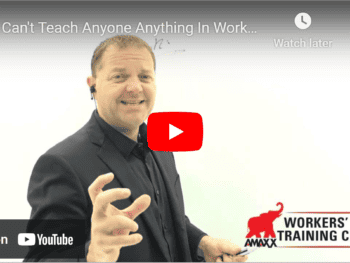FREE STEP-BY-STEP DOWNLOAD –
Click Link to Access Free PDF Download
There are only a few short weeks left in this election season. And in the next coming weeks, American’s going to decide who we would like to cast our vote for, to lead our country politically. Hello, my name is Michael stack and I’m the CEO of Amaxx.
All Decisions Start With Assessment
And that assessment process, your voting process, your decision-making process, you’re going to assess your current candidates, job performance. Do you like it? Do you not? You’re going to assess the background of the alternative candidate for whatever position is whether it’s president or Senate or local leaders. And you’re going to determine and take action based on that assessment, based on your assessment performance and work comp management. That process is exactly the same. We want to know. We want to go through exactly how things have gone at your organization, right? Your client’s organizations in order to decide, in order to help you decide to take action and what action you need to take today.
5 Elements to Review in Assessment of a Workers’ Comp Program
I want to give you these five different items that you’re going to be assessing in this process and this decision making process at this initial evaluation of where you are, where your client is as an organization within their work comp managing program. First place that I like to start is your policies. What policy do they have in place? Transitional duty policy? What are their leave policies? How do all these policies of the organization work together and influence and impact, particularly the motivation of individuals to participate in your program. This can get down to a cost allocation policies as well. All of these different items go into this bucket of policy. Next is your procedures. Other people would also call these your controls. So what are your procedures for handling an injury? When someone happens, when an injury happens, what happens? What is your procedure? What are your controls?
What are those different elements in place to help you get on top and stay on top of your injury and your injury management. This is a return to work. This is injury response. This is how you get the information back from your medical providers. What are all these different procedures and controls that come into play? Third are your forms. So what are your actual forms look like? So this is your ability to work for them. So when you come back from the doctor, how do you get that information to say, what can and can’t this person do? What are those actual forms look like? As far as your employee witness for your reports of injury, your employees, your supervisors, your witnesses, what do these actually look like? This can be done with a pen and paper. This is going to be done electronically with a VR, with an app.
This can be done a lot of different ways, but how are you capturing that information to plug into your workflow? Next is your claim files, ton of information you can learn from auditing your claim files. So if you have the stated policies and procedures and forms, how are they actually working? So you can look at your claim files, you say, well, all right, John and Jane and Tom were all injured. Let’s take a look at our work, our, our claim files. What actually happened in these? Did we follow these well? Or did we not? And where are those areas for improvement? And then last piece that I’d love to do this in the beginning, as you’re reviewing everything, is your employee classifications. So your employee classifications, and this comes down to, are the employees in the right class code or not are the in the right class code or not, as you’re reviewing all of this stuff and you’re reviewing all this information, this can be a real low hanging fruit type item when you’re particularly if you’re in a guaranteed cost type program where you can, you can find actually there’s a lot of opportunity here.
We haven’t classified this whole group of people and we’ve classified them in properly. And that can lead to a lot of savings at our work comp program. This is all about getting the lay of the land, understanding where you are.
FREE DOWNLOAD: “5 Critical Metrics To Measure Workers’ Comp Success”
Assessment Can Be Completed Relatively Quickly
If you review these five things, and this doesn’t have to be a year-long project, this could be a couple of weeks or at the most, a couple of months, if you’re doing it, you know, as thoroughly, and as in a little bit of a slower fashion, but, but you can certainly blitz this within a couple of weeks and get a really good idea of where you currently stand at in order to help make that decision for now where to go. So where’s your best, where’s your best efforts put into now having the best impact, having the lowest boast savings, your work comp program and driving those improved injured worker outcomes. Before we make any big decisions, we need to assess where we currently stand. That’s true, certainly for the election and very much true in regards to our work comp programs and get my name is Michael Saxon and CEO of AMAX. And remember your work today, and workers’ compensation can have a dramatic impact on your company’s bottom line, but it will have a dramatic impact on someone’s life. So be great.

Contact: mstack@reduceyourworkerscomp.com.
Workers’ Comp Roundup Blog: https://blog.reduceyourworkerscomp.com/
©2020 Amaxx LLC. All rights reserved under International Copyright Law.
Do not use this information without independent verification. All state laws vary. You should consult with your insurance broker, attorney, or qualified professional.
FREE DOWNLOAD: “5 Critical Metrics To Measure Workers’ Comp Success”









